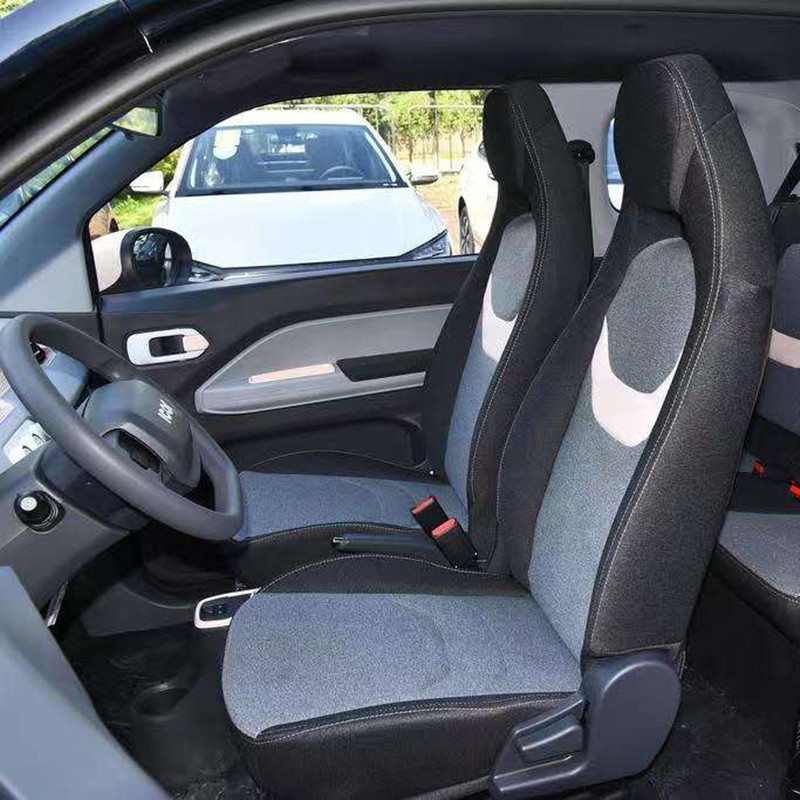Engineering Vehicle Seats
Engineering Vehicle Seats
As a core component of engineering machinery, engineering vehicle seats directly affect the driver's comfort, safety, and work efficiency. The following is a comprehensive analysis from aspects such as technical standards, design features, market trends, and purchasing suggestions:
I. Technical Standards and Safety Design
1. Mandatory Safety Specifications
In accordance with the Technical Specifications for Commercial Vehicle Seats implemented in 2025 and GB/T 40514-2023 Safety Technical Requirements for Engineering Machinery Seats, engineering vehicle seats must pass tests such as roll-over protection (ROPS) and dynamic impact load tests to ensure structural stability under extreme working conditions. For example, some high-end seats are equipped with three-point seat belts, anti-collision collapse mechanisms, and active protection systems that comply with the ISO 26262 functional safety standard.
2. Impact Resistance and Shock Absorption Technology
- Airbag Shock Absorption: Vehicles such as the Ruiwo Dajingang ES Pro and Isringhausen Huatai NTS870 adopt airbag suspension systems, which can automatically adjust damping according to road conditions and reduce vertical vibration by more than 90%.
- Mechanical Spring/Hydraulic Shock Absorption: Suitable for high-vibration environments (such as mining vehicles), it buffers impacts through multi-stage springs or hydraulic oil, and its cost is 30%-50% lower than that of airbag solutions.
II. Comfort Design and Intelligent Upgrades
1. Ergonomic Optimization
- Multi-directional Adjustment Function: Supports 9-12 adjustment items including seat height, fore-and-aft position, backrest angle, lumbar support, and shoulder support. Some high-end models are equipped with an electric memory function, which can store 3 sets of driver preference settings.
- Material Innovation: High-density polyurethane foam (with a rebound rate of ≥65%), memory foam, or carbon fiber composite materials are used, combined with breathable and wear-resistant fabrics (such as Korean leather and environmentally friendly fabrics), to balance support and breathability.
2. Intelligent Cockpit Integration
- Health Monitoring: Integrates pressure sensors and heart rate monitoring modules to analyze sitting posture and fatigue in real time, and reminds the driver to adjust their state through seat vibration or voice prompts.
- Environmental Adaptability: Seat heating/ventilation (temperature adjustment range: 30-45℃) and massage functions (8-12-point pneumatic massage) can automatically start and stop according to the ambient temperature, improving work comfort.
- Human-Machine Interaction: Some vehicle models support voice control for seat adjustment or linkage with the on-board CAN bus to realize pre-adjustment of the seat posture during automatic driving.
III. Material Innovation and Lightweight Trend
1. Application of Lightweight Materials
- Carbon Fiber Composite Materials: The weight of the frame is 30%-40% lighter than that of traditional steel, and the fatigue resistance is doubled. Its penetration rate in new energy engineering vehicles has reached 18%.
- Aluminum Alloys and High-Strength Steel: Aviation-grade aluminum alloys (such as 6061-T6) or boron steel (with a tensile strength of ≥1500MPa) are used to reduce the overall vehicle energy consumption while ensuring strength.
2. Environmental Protection and Sustainability
- Recycled Materials: The new EU regulations require that the utilization rate of recycled materials in seats shall not be less than 20% by 2025; for scenarios with frequent adjustments (such as cranes), electric multi-directional adjustment models are recommended.
- Certification Compliance: Ensure that the seats pass the certification of standards such as GB/T 40514-2023 and ISO 7096, and new energy vehicle models must meet the requirements of battery layout and lightweight.
- Customization Services: Large engineering enterprises can customize seats through OEM channels, such as logo embroidery and special fabrics (such as oil-proof coatings).
IV. Maintenance Costs
1. Daily Maintenance
- Regularly clean the seat surface, and use neutral detergents to avoid damaging the fabric; check the airtightness of the airbag, and it is recommended to replace the hydraulic oil every 6 months.
2. Maintenance Costs
- The replacement cost of the air valve is approximately 200-400 yuan, the maintenance cost of the damper is about 500-800 yuan, and the cost of overall renovation (including foam materials) ranges from 1500-3000 yuan.
V. After-Sales Support
1. Warranty Policy
- Mainstream brands provide a 1-3 year warranty, and some enterprises offer free replacement of parts within 1 year.
2. Localized Services
- Main engine manufacturers such as XCMG and SANY Heavy Industry have set up more than 200 service outlets across the country, providing on-site maintenance within 48 hours.
VI. Future Trends
1. Intelligent Integration
- Seats equipped with fatigue monitoring and posture adaptive adjustment are expected to have a penetration rate of over 25% in the high-end market by 2025 and will be deeply linked with ADAS systems.
2. Electrification Adaptation
- Seats for new energy engineering vehicles need to integrate a battery thermal management system, and the demand for lightweight will drive the penetration rate of carbon fiber frames to more than 30%.
3. Modular Design
- It supports quick replacement of components such as seat cushions and backrests, improving maintenance efficiency by 50% while reducing the whole-life cycle cost.
The selection of engineering vehicle seats needs to comprehensively consider working condition requirements, budget, and technical iteration trends. Priority should be given to products that have passed the latest safety certifications and have intelligent functions, and long-term cooperation should be established with main engine manufacturers or first-tier suppliers to ensure the sustainability of after-sales support and technical upgrades.




